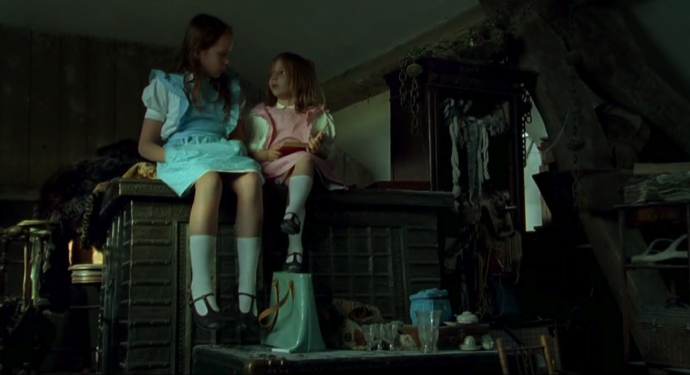A few months ago a friend sent me this fascinating article about Eva Tanguay, an outrageous but nearly-forgotten vaudeville actress who may have been the inspiration for Norma Desmond in Sunset Boulevard. Whether or not this is the case, and whether or not she deserves the title of “first” rock star does nothing to diminish her star quality: Ms. Tanguay understood the essential ingredients of celebrity. What she wasn’t cognizant of was the need to record herself for posterity, and this is perhaps why she fell victim to history. Only one 78 rpm recording exists of her voice, that of her signature song “I Don’t Care.”
Tanguay also only made one feature which I would give my eyeteeth to see: the 1916 silent film The Wild Girl.
Performance excerpts, along with clips from the The Wild Girl (And yes, that’s Judy Garland singing ‘I Don’t Care.”)
The author points out in the article that press and popular literature mention Tanguay all the time. I came across this delicious anecdote in a book that I just ordered and I can’t get enough of: Show Biz, from Vaude to Video, by Abel Green and Joe Laurie, Jr. Luc Sante describes it in his source notes as “a history of prewar American popular culture derived from the files of Variety and narrated in that paper’s side-of-the-mouth style.”

The book is treasure trove of colorful details, and this Tanguay entry is one of many. Behold:
"Heywoud Broun, as drama critic for the New York Tribune, reviewed her act under headline:
SOMETHING ABOUT WHICH EVA TANGUAY SHOULD BE MADE TO CAREWrote the acidulous Broun:
“Ours is a democracy, so probably nothing much can be done about the singing of Eva Tanguay. But even in a free country, there should be some moral force, or physical if need be, to keep her away from the ‘Marseillaise.’ She should not be allowed to sing it even on her knees, and it is monstrous that the great hymn of human liberty should be shrilled as a climax to a vulgar act by a bouncing singer in a grotesque costume begirt with little flags.
Miss Tanguay sings in French, and I have no idea whether she is trying to be funny. I never know what she is trying to be except noisy. I think she is the parsnip of performers. The only cheerful song in her repertory yesterday was one in which she hinted that some day she would retire. Miss Tanguay is billed as ‘bombshell.’ Would be to Heaven she were, for a bomb is something which is carried to a great height and then dropped.”
The outraged Eva promptly took an ad in Variety. With more courage than prudence, she reprinted the withering Broun review under the scornful headline: EVA TANGUAY–THE PARSNIP OF PERFORMERS. And then Eva let loose her blast of indignation, in some very free and fiery verse:
“Have you ever noticed when a woman succeeds how they attack her until her character bleeds? They snap at her heels like mongrels unfed, just because she has escaped being dropped into FAILURE’S big web. They don’t give her credit for talent or art. They don’t discount a very hard start. They don’t give her credit for heartaches or pains; how she grimly held tight to the reins when the road ahead was rocky and drear; how smiling she met every discouraging sneer. AND…
Now to you who have slandered, YOU are dirt ‘neath my feet, for I have beaten your game and it’s a hard game to beat!”
